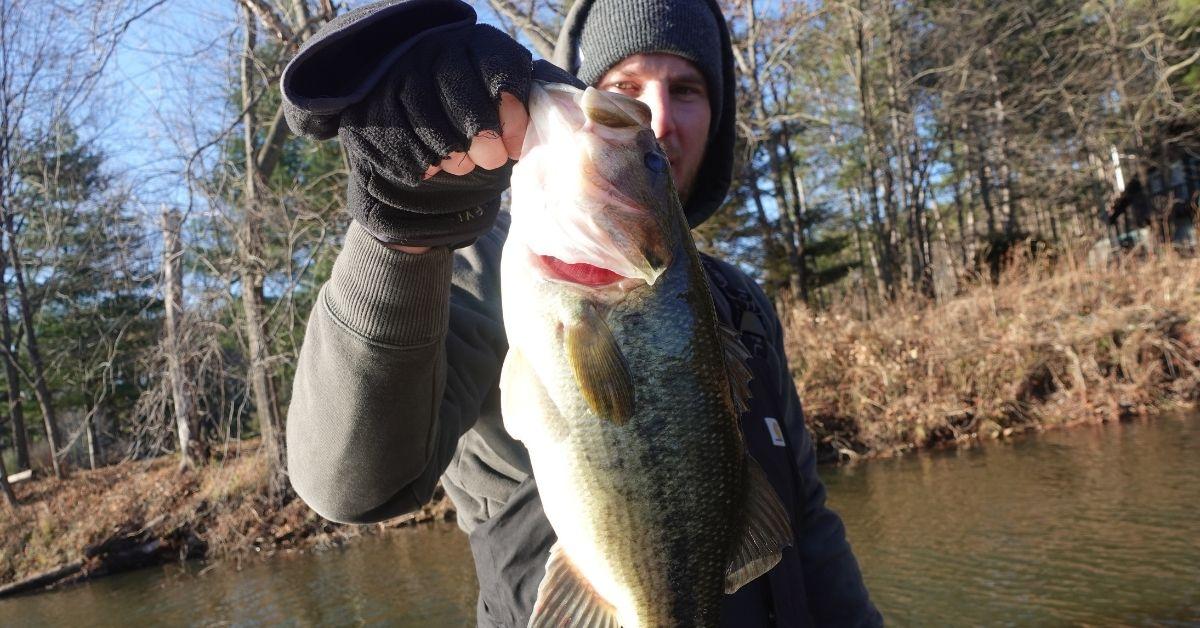A Few Simple Tricks For Catching Cold Water Bass
While fair-weather anglers stay huddled in the warmth of their homes, hard-core anglers endure winter hardships because they know lunker bass can be coaxed into biting this time of year. A lack of fishing pressure and a need to eat during the winter makes usually wary bass more susceptible to the offering from anglers willing to tolerate freezing fingers and cold coffee. As long as you can launch a boat you can catch bass throughout the winter on your favorite fishery.
Consistency Is Key
Weather plays a key role in wintertime fishing so the best time to chase bass is after two or three days of stable weather. If it is cloudy it needs to stay cloudy for a couple of days or if it’s sunny, it needs to stay sunny. A cold front or a severe winter storm usually shuts down the fishing until the weather stabilizes again.
Winter fishing also shuts down in cold, murky water so you need to search for the clearest sections of a lake. Then you need to look for the prime winter bass hangouts such as a “split point”—a major point in the back of a creek with about 30 feet of water that has two creek channels swinging into both sides of the point. Long sloping points dropping off into deep water also hold wintertime lunkers. Bass tend to congregate in two areas along a point—either where the channel swings in closest to the point or in any brush at the end of the point.
Where To Find Winter Bass
Depending on the weather, bass will either be hugging the rocks along the bottom or suspending 10 to 20 feet deep over brush piles or creek channels. Suspended bass tend to stack up like cordwood along a point. If you can find these fish, you can catch one on almost every cast.
Bass tend to suspend on cloudy days when barometric pressure is dropping or on sunny, windy days. The fish cling to rocky bottoms during calm, sunny weather. If the water is clear bass hovering over brush piles and creek channels suspend higher in the water column on overcast days.
The Suspense Is Killing Me
Catching suspended bass requires a lure that will linger at the same depth as the fish, so the best option is a suspending stickbait. The suspending lure is so effective because it tends to quiver like a dying shad after a slight twitch of the rod. Food is lacking at this time of year so an easy meal will trigger a strike from even the most lethargic bass. When worked properly, the suspending stickbait flutters through the schooling bass and gives them a chance to nab the bait.
Lure color selection depends on the weather or water conditions. For sunny skies or clear water, try a silver and blue or black color combination. A fire tiger or gold-and-black back stickbait works best on cloudy days or in stained water.
When you find a prime spot, position your boat in deep water and make a long cast towards the point. After the lure splashes down, quickly jerk your rod seven or eight times to make the lure dive. Once the stickbait reaches its maximum depth, let the lure sit still for 10 to 15 seconds before jerking the rod another two or three times. Bass usually strike the lure during the pause.
Pull Out The Pigskin
On calm, sunny days, you need to switch tactics to catch winter bass hugging the rocky bottom. You can fish the same type of areas that produce jerkbait bites, but you should concentrate more on the brush or rock piles along the bottom. Select a 1/2- or 3/4-ounce football jig and a plastic chunk for bumping the bottom for bass. Productive color combinations are black or brown mixed with chartreuse or blue.
Cast the jig and plastic trailer to the shallows and let it drop to the bottom. Start fishing the shallows because some fish will move towards the bank on sunny days.
While slowly pulling the jig, keep your rod tip down so the lure constantly bumps the rocks. If you want to work the lure slower, hold your rod still and let the boat’s drift nudge the bait along the bottom.
Strikes on the jig vary in intensity. Sometimes the fish will bite it hard and sometimes the jig will just feel a little heavier.
You can warm up to wintertime fishing by trying these tricks for cold water bass.
Updated December 9th, 2020 at 2:03 PM CT


